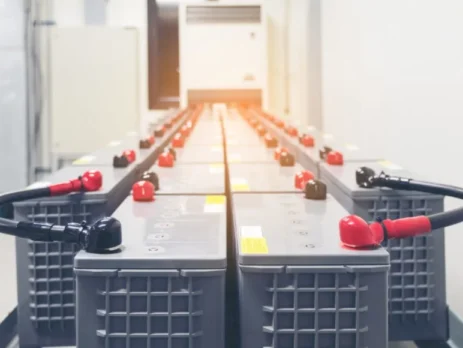The Importance of Early Gas Detection in Battery Storage
It’s not an exaggeration to say that the rise of lithium-ion batteries has revolutionised the energy landscape. These compact powerhouses have helped shift our society away from complete fossil fuel dependence, powering the rise of electric vehicles and enabling us to store renewable energy on a previously impossible scale. However, lithium-ion batteries are not an entirely risk-free energy source and can be volatile, which is a cause for concern for battery energy storage systems (BESS) who need to safeguard people – and their assets – from danger.
The Explosive Rise of Batteries
With the rise in lithium-ion batteries, has come a rise in high-profile cases of thermal runaway causing extraordinary damage through explosive fires, causing untold harm to the local environment, as well as eye-watering repair costs. Indeed, the widely-known risks of toxic thermal runaway has caused some pushback against the establishing of BESS sites, making it of paramount importance that battery energy supply can be made demonstrably safer.
Thermal runaway, characterised by uncontrolled heat generation and rapid battery failure, can lead to catastrophic consequences such as fires and explosions. What’s more, as heat can trigger thermal runaway in other batteries, the failure of one can lead to the failure of many, compounding the potential damage cost. While BESS insurers are well aware of such a risk, and have stipulations in place regarding fire, once fire has broken out the damage is already done. Prevention is always better than the cure, and so as suppliers and stakeholders in the lithium-ion battery industry, it’s imperative we address these risks head-on and prioritise safety measures to protect both assets and lives.
The Need for Early Gas Detection
Fortunately, FM Global and UL, two of the world’s largest public safety testing labs, have recognised the importance of gas detection in mitigating the risks associated with lithium-ion battery storage. Their documentation and standards serve as a testament to the critical role that early gas detection plays in ensuring the safety and reliability of energy storage systems. By adhering to these guidelines and implementing comprehensive gas detection strategies, suppliers can bolster their safety protocols and instil confidence in their products.
One of the key indicators of an impending thermal runaway event is the off-gassing from the compounds within the battery. As the internal components degrade or are subjected to extreme conditions, gases such as carbon dioxide, carbon monoxide, and hydrogen may be released, as well as other flammable gases ethylene and propylene. Detecting these gases early is critical, as it provides an opportunity to intervene before the situation escalates further, averting potential disasters. However, ensuring your gas detection system is able to recognise the wide variety of toxic and combustible gases accurately without getting poisoned is crucial. If it’s not accurate, it’s simply not effective and you’re putting your people and property at risk.
Cutting-Edge Gas Detection
While the importance of fire safety and suppression systems in mitigating the risks of lithium-ion battery fires is well-documented, the significance of gas detection systems is often overlooked. Unlike fires, which are often visible and generate smoke, gas emissions can go unnoticed until it’s too late. This gap in awareness underscores the need for robust gas detection solutions to complement existing safety protocols.
Safeguarding a Battery-Powered Future
The importance of early gas detection in battery storage cannot be overstated. Not only can the cost of failing to detect the early warning signs be devastating to your business, but as suppliers and stakeholders in the energy industry, it is our collective responsibility to prioritise safety and implement robust measures to mitigate risks. The only way to do this is through an innovative and rigorous approach to gas detection. By investing in advanced gas detection technologies, you will not only be safeguarding your assets, but the very future of energy storage, helping pave the way for a more sustainable tomorrow.
